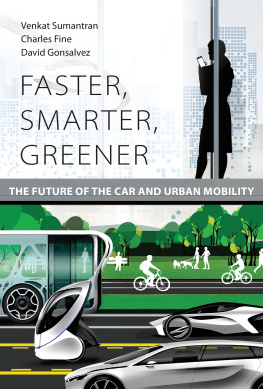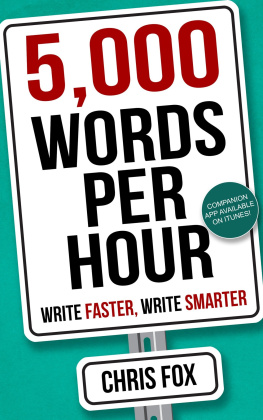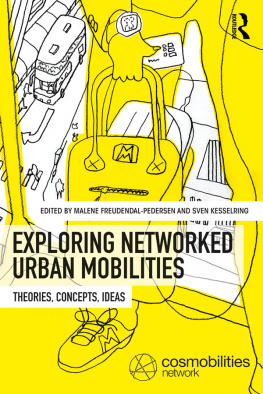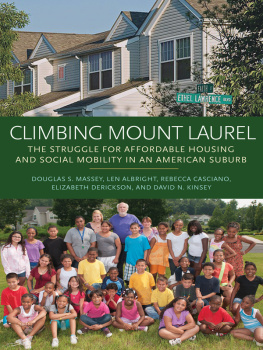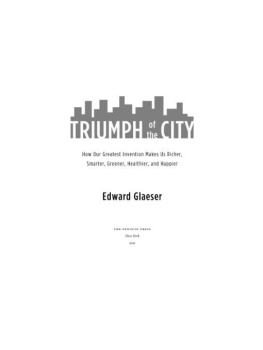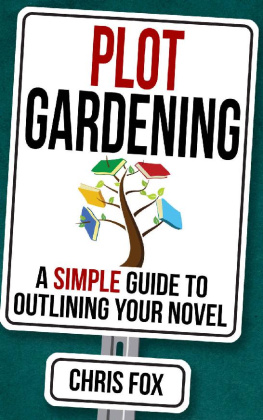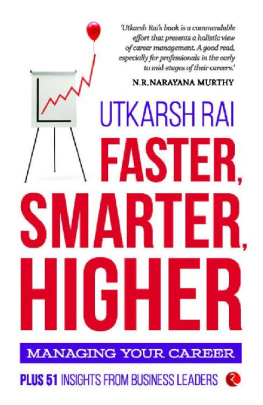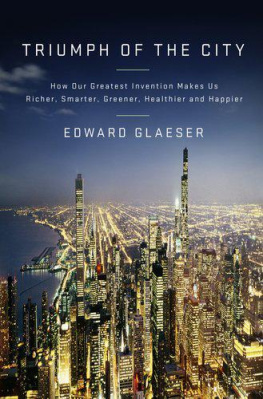V. Sumantran - Faster, smarter, greener : the future of the car and urban mobility
Here you can read online V. Sumantran - Faster, smarter, greener : the future of the car and urban mobility full text of the book (entire story) in english for free. Download pdf and epub, get meaning, cover and reviews about this ebook. year: 2017, genre: Romance novel. Description of the work, (preface) as well as reviews are available. Best literature library LitArk.com created for fans of good reading and offers a wide selection of genres:
Romance novel
Science fiction
Adventure
Detective
Science
History
Home and family
Prose
Art
Politics
Computer
Non-fiction
Religion
Business
Children
Humor
Choose a favorite category and find really read worthwhile books. Enjoy immersion in the world of imagination, feel the emotions of the characters or learn something new for yourself, make an fascinating discovery.
- Book:Faster, smarter, greener : the future of the car and urban mobility
- Author:
- Genre:
- Year:2017
- Rating:4 / 5
- Favourites:Add to favourites
- Your mark:
- 80
- 1
- 2
- 3
- 4
- 5
Faster, smarter, greener : the future of the car and urban mobility: summary, description and annotation
We offer to read an annotation, description, summary or preface (depends on what the author of the book "Faster, smarter, greener : the future of the car and urban mobility" wrote himself). If you haven't found the necessary information about the book — write in the comments, we will try to find it.
V. Sumantran: author's other books
Who wrote Faster, smarter, greener : the future of the car and urban mobility? Find out the surname, the name of the author of the book and a list of all author's works by series.
Faster, smarter, greener : the future of the car and urban mobility — read online for free the complete book (whole text) full work
Below is the text of the book, divided by pages. System saving the place of the last page read, allows you to conveniently read the book "Faster, smarter, greener : the future of the car and urban mobility" online for free, without having to search again every time where you left off. Put a bookmark, and you can go to the page where you finished reading at any time.
Font size:
Interval:
Bookmark:

Faster, Smarter, Greener
Faster, Smarter, Greener
The Future of the Car and Urban Mobility
Venkat Sumantran, Charles Fine, and David Gonsalvez
The MIT Press
Cambridge, Massachusetts
London, England
2017 Massachusetts Institute of Technology
All rights reserved. No part of this book may be reproduced in any form by any electronic or mechanical means (including photocopying, recording, or information storage and retrieval) without permission in writing from the publisher.
Library of Congress Cataloging-in-Publication Data
Names: Sumantran, V., 1958- author. | Fine, Charles H., author. | Gonsalvez,
David J. A. (David Joseph Anthony), 1956- author.
Title: Faster, smarter, greener : the future of the car and urban mobility /
Venkat Sumantran, Charles Fine, and David Gonsalvez.
Description: Cambridge, MA : MIT Press, [2017] | Includes bibliographical
references and index.
Identifiers: LCCN 2017001168 | ISBN 9780262036665 (hardcover : alk. paper)
Subjects: LCSH: Transportation, Automotive--Technological innovations. |
Automobiles--Technological innovations. | Automobile industry and
trade--Technological innovations. | Urban transportation--Technological
innovations.
Classification: LCC HE5611 .S86 2017 | DDC 388.3/21--dc23 LC record available at https://lccn.loc.gov/2017001168
EPUB version 1.0
To Girija and Ramani
Preface
For last years words belong to last years language
And next years words await another voice.
T. S. Eliot
Mobility has served as the lifeblood of human civilization. Over the course of the twentieth century, often referred to as the century of the automobile, cars have moved drivers and riders with a combination of utility, efficiency, and variety, unrivaled in the industrial age. Yet as new cars are welcomed by the millions, the world appears poised on the edge of a new horizon for mobility, one that promises to be faster, smarter, and greener.
This book studies a world that is changinga world in which peoples values, priorities, demographics, and lifestyles are evolving faster than ever before. The chapters that follow traverse a spectrum of technology, entrepreneurship, social change, and governance that engages the human desire for transformed mobility architecture, and anticipate necessary and desirable changes that society will make to move toward such future-relevant, vibrant, and sustainable mobility.
This book peers into this evolving world of wondrous variety, ingenious innovations, engaging enterprises, and ecologically minded communities and proposes a mobility architecture for the challenges of the times. We propose an architecture that is robust, adaptable, and efficient along with a framework that may serve as a template for societies as they transform and adjust their mobility systems. Peoples journeys are seldom limited solely to economic goalsthere is joy in traveling across new landscapes. Similarly, our book not only deals with mobility as a topic of vital importance to the global economy, it also offers the reader a window seat from which to observe a rapidly evolving mobility landscape.
The century of the automobile
The automobile has been central to human mobility systems for over a hundred years. From its origins, when horseless carriages required a flagman to walk ahead of each car, the automobile has been responsible for a remarkable evolution in mobility experiences. Automotive production evolved from a cottage industry relying on a small number of craftsmen to becoming arguably the biggest industrial sector of the global economy. Cars have sped past the sound barrier on the ground and have carried astronauts on the moon. And now cars can communicate with each other to avert accidents and even drive themselves in urban traffic.
Along the way, a love affair blossomed between people and cars. Through symbiotic evolution, the auto industry reshaped urban and suburban landscapes and changed how we live, work, and play. For many, the automobile made personal mobility available round-the-clock. And access to efficient mobility has propelled economic development and a better quality of life in many parts of the world. When early humans began to walk upright, a new vantage was gained and bipedal mobility multiplied survival options. Cars afforded humans yet another level of mobility. Cogito ergo zoom is a mantra we have lived by ever since.
When Peter Drucker, referring to the auto industry, coined the phrase industry of industries, could even he have foreseen how powerful the impact of the automobile would become? The raw numbers are staggering. If the auto industry were a country, its annual revenue, exceeding $3.5 trillion, would earn it the number four rank among nations. The industry accounts for more than 50 million employed across the value chain. The global vehicle population registers at more than 1.1 billion, which means there are almost as many cars on Earth today as there were people when the automobile was invented.
Troubled waters
Yet the sheer success and omnipresence of cars have created a new set of problems. In urban areas, which contribute more than 85 percent of global GDP, population densities are crowding out space for automobiles. Congestion is a pain point that sits high on the list of most city administrators. Societies have awoken from a reverie to realize that we have been designing cities for cars when we should have been designing cities for people. Accelerated urbanization in emerging economies and a wave of urban renewal in mature economies are pressuring urban planners to rethink and redesign cityscapes and regulations, sometimes aimed at curbing the use of personal vehicles.
Cars have often been the most efficient and quickest mode for point-to-point travel in cities. This assumption is less frequently true today. For some, escalating cost, congestion, and inconvenience are turning this beloved asset into a liability. As Thoreau reflected, When the farmer has got his house, he may not be the richer but the poorer for it, and it be the house that has got him. One might say this about many urban car owners.
Peoples passion for cars has cooled for other reasons as well. The scale of the human impact on our planet is becoming more evident with each passing decade. The levels of increase in greenhouse gas emissions and depletion of resources are not sustainable. Cars have become cleaner and greener in dramatic fashion. Yet the sheer increase in the global vehicle population means that this progress is insufficient. Governments are restricting profligate development, constraining vehicle designs, and limiting the use of personal cars, which will become increasingly expensive to develop, own, and operate.
Even as the long love affair between people and the driving machine seems to be waning, a new romance is blooming. Smartphones are the new object of love and adoration. Phones have supplanted cars as a portal to social interactions, communication, and entertainment and even as a space for intimacy. The smartphone has changed customer expectations broadly with respect to personalization, connectivity, and information-integrated system technologies by offering a breathtaking new array of possibilities.
Cultural attitudes are changing too. A few decades ago, in many countries, obtaining a drivers license was a rite of passage for many teenagers. Not anymore. Vehicle ownership, vehicle use, and the number of licensed drivers are all declining in most developed economies. Many young adults are choosing to abandon the suburbs their parents populated and moving to rejuvenated cities with a wide array of bars, cafs, theaters, and restaurants and myriad opportunities for social interaction. Cars rank lower in priority for many of this tribe compared to earlier generations.
Font size:
Interval:
Bookmark:
Similar books «Faster, smarter, greener : the future of the car and urban mobility»
Look at similar books to Faster, smarter, greener : the future of the car and urban mobility. We have selected literature similar in name and meaning in the hope of providing readers with more options to find new, interesting, not yet read works.
Discussion, reviews of the book Faster, smarter, greener : the future of the car and urban mobility and just readers' own opinions. Leave your comments, write what you think about the work, its meaning or the main characters. Specify what exactly you liked and what you didn't like, and why you think so.

